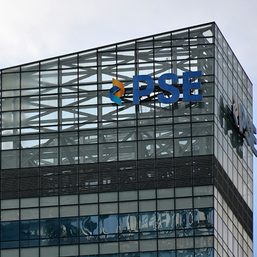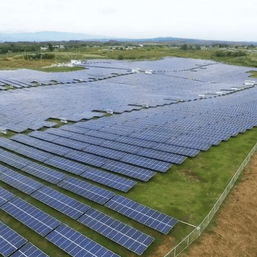SUMMARY
This is AI generated summarization, which may have errors. For context, always refer to the full article.
![[ANALYSIS] The market’s current range-bound movement](https://www.rappler.com/tachyon/2023/05/tl-inflationtrade.jpg)
At the moment, it seems that inflation rate is the one single issue among the universe of risk factors buffeting the market that remains to have a big impact on investors’ sentiments, which, in turn, had been the sole determinant factor in the market’s recent directions.
All other risk factors – together with weather disturbances – that are in play at the moment are relegated to the back burner in the mind of market participants.
Precisely so, this may explain the market’s performance that was largely range-bound last week, for the reason that it tended to ping back and forth between its estimated immediate resistance and support levels of 6,400 and 6,600 (give and take 50 points on both end) in the PSEi chart, respectively.
To begin with, the market opened up for the week strongly on Monday, April 24, on an optimistic outlook over speculations that the inflation rate is improving, so that it closed at the day’s session high of 6,598.38 with a net gain of 77.94 points or 1.20%.
Continuing to amaze me were the trading activities of foreign investors. They became net buyers again for the day. Their trades also accounted for 50.16% of total market transactions, a market participation large enough to have an impact on the day’s northward direction of the market. Total volume and total value turnover were within normal limits of 807.42 million shares and P5.34B, respectively.
On Tuesday, April 25, the market opened up again strongly at 6,595.51. This was 2.87 points below the previous day’s close and only 4.49 points away to breaking the market’s estimated immediate resistance of 6,600. Unfortunately, the market closed with a net loss of 4.99 points or 0.08% when it settled for the day at 6,593.39 – only 6.61 points below the immediate breakout level.
The trading stratagem of foreign investors for the day appeared to have something to do about it. Aside from becoming a major net seller, they accounted for no less than 56.70% of total market transactions. This was repeated the next day (Wednesday, April 26). Foreign investors continued to be net sellers with an overwhelming market transaction equivalent to 59.54% of total value turnover. This time, the market fell at 6,540.24, down 53.15 or. 0.81%.
Needless to say, buying interests were put at bay by news that once again threatens the already fragile situation of the US banking system and Europe, together with the talks on the possibility of another interest rate increase by the US Federal Reserve.
On Thursday, April 27, the market was able to snap out of its two-day losing streak amid a slew of positive corporate results and news reports, not to mention the statement made by the American financial information and analytics company, S&P Global Ratings Inc. on its GDP outlook for the Philippines. The market closed at 6,583.68, up 43.44 points or 0.66%. Foreign investors were net buyers with market transactions equivalent to 43.87% of total value turnover.
S&P Global Ratings raised its GDP outlook for the Philippines to 5.8% for 2023, compared to its earlier forecast of 5.2%. It also upgraded its regional GDP growth outlook to 4.6% (from 4.3%) this year, and 4.7% for 2024 (from 4.6%). Likewise, S&P Global Ratings had positive remarks in China’s recovery at the same time held fears of slower growth estimates for the US and Europe.
Due to further bargain-hunting activities, the market managed to climb higher on Friday, April 29, to close into positive territory with a net gain of 41.40 points or 0.63% at 6,583.68. Notably, foreign investors were net buyers on a low market participation of only 43.87% of total market transactions.
In summary, daily average value turnover for the week improved to P5.81B, compared to the YTD daily average of P7.11B. Foreign investors accounted for 52.04% of total market transactions for the week as net buyers, while they remained as net sellers on a YTD basis with a corresponding total market participation equivalent to 42.77% of total value turnover, indicative of their continuing poor outlook for the market.
All counters were up except for the “Services” and “Mining & Oil” sectors; the PSEi Index registered a relatively good price-earnings-ratio (PER) of 14.40x, while the All Index showed a PER of 11.05x.
Kind of consolidation
When the market closed for the week at 6,625.08, it was up with a net gain of 104.64 points or 1.60%. And while it somewhat tended to ping back and forth, it did not climb to previous highs and then fell back to prior lows within the week – a movement that does not strictly fit the definition of a range bound market. Instead, it closed to a new high that technically breach the estimated immediate resistance level of 6,600.
Taking into consideration the early trading results this week, the market can still be considered range-bound as there are no definitive strong moves in either direction but, nevertheless, is also in some form of movement as in a consolidation. In particular, the market was up 47.61 points or 0.0.71% at 6,672.69 on Tuesday, May 2, with a total volume of 1.17B shares and total value turnover of P4.09B.
This was all taken back on Wednesday, May 3, when the market settled at 6,606.69, with a net loss of 66.00 points or 0.98% on a comparatively lower volume of 567.97 million shares on a relatively higher total value turnover of P4.94B.
As to what form of consolidation the market is going through is still a puzzle. Based on common definition, “the trend (in a consolidation) is sideways and may vary depending on the circumstance…(and) once this range is broken, it may lead to bigger moves. However, while the range is intact, “the movement cannot be clearly predicted.”
As further explained, a market under consolidation could be in the process of accumulation (the market is bound to go up) or distribution (the market is bound to go down) – a concept that was developed by Larry Williams and discussed in his book How I Made a Million Dollars, and further recast for more specific conditions by Marc Chaikin, “the founder of Chaikin Analytics” and developer of momentum indicators like “the Chaikin Money Flow.”
I must admit, however, that notwithstanding the above – and earlier – predictive technical tools I have mentioned, I cannot still predict for certain what the market will do next.
Helpless as you may realize more than ever, take comfort in the knowledge that there is this market adage – advocated by my favorite market trader, Alexander Elder – that “making money in stock trading does not mean knowing the secrets of forecasting future prices!” – Rappler.com
The article has been prepared for general circulation for the reading public and must not be construed as an offer, or solicitation of an offer, to buy or sell any securities or financial instruments whether referred to herein or otherwise. Moreover, the public should be aware that the writer or any investing parties mentioned in the column may have a conflict of interest that could affect the objectivity of their reported or mentioned investment activity. You may reach the author at densomera@yahoo.com)
Add a comment
How does this make you feel?
![[ANALYSIS] Trading the ranges](https://www.rappler.com/tachyon/2023/04/tl-trading-the-ranges.jpg?fit=449%2C449)
![[In This Economy] A counter-rejoinder in the economic charter change debate](https://www.rappler.com/tachyon/2024/04/TL-counter-rejoinder-apr-20-2024.jpg?resize=257%2C257&crop=267px%2C0px%2C720px%2C720px)
![[Vantage Point] Joey Salceda says 8% GDP growth attainable](https://www.rappler.com/tachyon/2024/04/tl-salceda-gdp-growth-04192024.jpg?resize=257%2C257&crop_strategy=attention)
![[ANALYSIS] A new advocacy in race to financial literacy](https://www.rappler.com/tachyon/2024/04/advocacy-race-financial-literacy-April-19-2024.jpg?resize=257%2C257&crop_strategy=attention)




![[ANALYSIS] Search for stocks that continue to sizzle](https://www.rappler.com/tachyon/2024/04/search-stocks-that-sizzle-April-5-2024.jpg?resize=257%2C257&crop_strategy=attention)

![[ANALYSIS] Concern about the right trading call during Holy Week](https://www.rappler.com/tachyon/2024/03/Concern-about-right-trading-holy-week-March-22-2024.jpg?resize=257%2C257&crop_strategy=attention)
There are no comments yet. Add your comment to start the conversation.